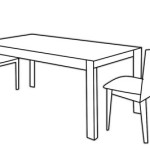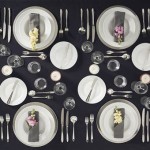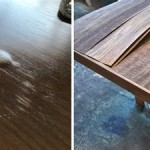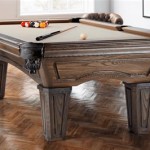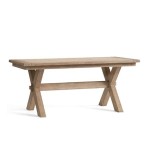Space Requirements for a 6ft Pool Table
Choosing a pool table for a home or recreational space involves careful consideration of available room. A pool table, regardless of size, requires adequate clearance around its perimeter to allow players comfortable maneuvering and unobstructed shots. A 6ft pool table, while smaller than standard tournament-sized tables, still demands a significant amount of space to ensure enjoyable gameplay.
This article will provide a detailed exploration of the space requirements for a 6ft pool table, outlining the necessary dimensions for comfortable play and offering guidance on measuring and planning the layout of the room. Understanding these spatial considerations is crucial to prevent cramped conditions, compromised gameplay, and potential damage to the table or surrounding environment.
Understanding Pool Table Dimensions and Play Area
A 6ft pool table, typically referred to as a "bar-sized" or "compact" table, measures approximately 6 feet in length and 3 feet in width. However, the playing surface, defined by the inner edges of the cushions (also known as rails or bumpers), is smaller than the overall table dimensions. The exterior dimensions, including the frame and rails, must be considered when assessing the space needed. The exact dimensions may vary slightly depending on the manufacturer and design of the table.
The play area is defined as the rectangular area within the cushions where the billiard balls are meant to roll. This area is critical for determining the amount of free space needed around the table. The smaller the play area, the less room required for comfortable shot execution. However, even with a 6ft table, a minimum amount of clear space must be maintained around all sides.
Beyond the physical dimensions of the table, the length of the cue stick is a significant factor. Standard cue sticks are typically 57 or 58 inches long. Players need enough room to fully extend their cue stick without hitting walls, furniture, or other obstructions. This requirement is the primary driver in determining the minimum room size necessary for playing pool comfortably.
Calculating Minimum Room Size for a 6ft Pool Table
Determining the minimum room size involves adding the cue stick length twice to the table's width and length. This calculation accounts for a player needing to stand on either side of the table and execute a shot. The following formula can be used:
Room Width = Table Width + (2 x Cue Stick Length)
Room Length = Table Length + (2 x Cue Stick Length)
Using a standard 57-inch cue stick and assuming the 6ft pool table measures 72 inches (6 feet) in length and 36 inches (3 feet) in width, the calculation is as follows:
Room Width = 36 inches + (2 x 57 inches) = 36 inches + 114 inches = 150 inches (12.5 feet)
Room Length = 72 inches + (2 x 57 inches) = 72 inches + 114 inches = 186 inches (15.5 feet)
Therefore, the minimum room size recommended for a 6ft pool table is approximately 12.5 feet wide and 15.5 feet long. This size allows for adequate space to use a standard cue stick without obstruction. However, it is essential to consider factors such as player skill level and playing style, which may influence the need for additional space.
Less experienced players may benefit from more room to compensate for less precise movements. Similarly, players who prefer longer back swings or more elaborate stances will require more clearance. It may be prudent to add an extra foot or two to both dimensions to accommodate these variables, especially if multiple players will regularly use the table.
Practical Considerations for Room Layout
Beyond the minimum room size, the layout of the room is crucial for maximizing gameplay enjoyment. Obstructions such as furniture, support columns, doorways, and low-hanging light fixtures can significantly impede movement and shot execution. It is essential to consider these elements and plan the table's placement accordingly.
The placement of the pool table should ideally provide equal accessibility from all sides. Avoiding placement near walls or corners is advisable, as it can restrict access and make certain shots difficult or impossible. If the room has windows, consider their height and placement to avoid glare that might interfere with visibility of the balls. Also, protect windows from potential accidental damage from a stray cue stick.
Adequate lighting is another important consideration. Direct overhead lighting is preferred to ensure consistent and even illumination of the playing surface. Avoid placing the table in areas with significant shadows, which can make it difficult to accurately judge distances and angles. Installing a dedicated pool table light fixture is a worthwhile investment to optimize visibility and enhance the playing experience.
Furthermore, consider the flooring type in the room. Hardwood or tile floors are generally preferred over carpet, as they allow chairs and players to move more freely. If the room has carpet, ensure it is a low-pile variety to facilitate smooth movement. Placing a protective mat under the pool table can also help to prevent damage to the flooring from dropped balls or accidental scratches.
Finally, think about storage for cues, balls, and other accessories. A wall-mounted cue rack or a standing corner rack can help to keep these items organized and accessible without taking up valuable floor space. Consider incorporating a small table or stand near the pool table to hold drinks, scorekeeping materials, or other essentials.
In scenarios where space is severely limited, shorter cue sticks can be employed. These are often referred to as "shorty cues" or "children's cues" and are typically available in lengths ranging from 36 to 48 inches. Using shorter cues reduces the required room dimensions, but may negatively impact the player's ability to execute certain shots effectively, especially longer shots requiring significant power and control.
Another option for tight spaces is to consider multi-purpose furniture. For example, a coffee table that can be easily moved or folded away can create more room for playing pool when needed. Similarly, chairs that can be stacked or stored when not in use can help to maximize the available space. Flexibility and adaptability are key in optimizing a small room for pool table use.
Ultimately, determining the ideal space for a 6ft pool table requires a balanced assessment of the table's dimensions, cue stick length, player skill level, room layout, and personal preferences. Careful planning and consideration will result in a comfortable and enjoyable playing environment.

Pool Table Room Size Calculator

What Room Size Do I Need For My Pool Table Liberty

Pool Table Room Size Guide Home Leisure Direct

What Room Size Do I Need For My Pool Table Liberty

Room Size Specifications Olhausen Billiards

Room Size Pooltables Com

Room Size For A Pool Table

Pool Table Room Size Guide Home

Supreme Pool Table Room Size Information

Pool Table Room Size Guide Home

